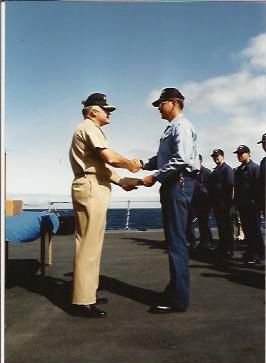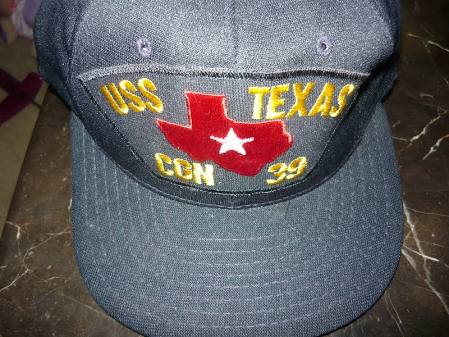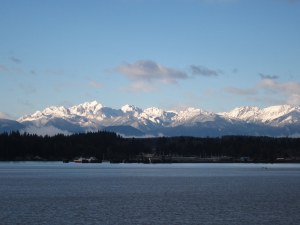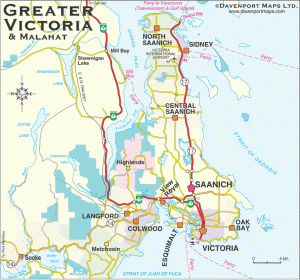There is nothing more enticing, disenchanting, and enslaving than the life at sea. Joseph Conrad
In February 1992, at age 32, my personal life in shambles ( an estranged wife with mental illness, and crushing debt were the big issues), I received orders to the USS TEXAS (CGN-39), a nuclear powered guided missile cruiser homeported in Alameda, California – across the bay from San Francisco. I drove out from Florida by myself. Arriving at the bottom of the brow, I was ready and excited to begin my first period of “sea duty”. I was reporting as one of three technicians, supporting the communications and RF surveillance systems – which I had just spent half a year learning. Looking back today, the electronics and the computer control – running octal code! – were less complex than the average electronic toy today. But in 1992, few people owned a personal computer, and maybe the well-heeled might have a “car phone” — bulky device, with bag, battery and a cigarette lighter socket charger.
The duties I was assigned – as the newbie out of school – were general. I was already being called “grandpa” since I was nearly six or seven years older than the senior tech in our workcenter. As the new guy, I was put in a harness to go aloft. (The harness came with a “ball-buster”, so-called because of the mechanical brake used as a safety line for ascending and descending the mast — if you disconnected without thinking, a few pounds of metal would swing away and crash into your groin! )

For a guy that wasn’t all that fond of heights – I had been rappelling mountains in Virginia to end that timidity climbing a hundred feet up above the water pierside was my “welcome”. Of course, the lamp at the top of the mast, attached to our TACINTEL antenna had no need to be changed. But the gentle sway was calming, and height never troubled me after that. I spent a lot of time over the course of several years greasing fittings, cleaning away salt buildup, sanding and painting equipment. Since each communications shop : the CT and EW (electronic warfare or ELINT guys) were in my division; the Radiomen and the Combat Systems groups also had things to maintain aloft. The primary time to do these chores were in port for extended periods as we would have the rotating and radiating (radars especially) for our ship and neighboring ships “tagged out”. Nobody wanted to be sterilized or cooked (think of a microwave oven) from RF energy.
Between performance tests, maintenance, cleaning, and cross-training as an operator in our own center, we had training in security force ( rapid reaction team), firefighting, damage control and other collateral jobs. Because of the nature of the job, most of the crew knew us only as “spooks”, and Maintenance (CTMs) were not above getting strange looks from the hot and sweaty Engineering (Snipes) crew. You see, in a couple of our workspaces, the air conditioning (chilled water) system were overly efficient. Large, heat-generating equipment had been replaced with newer systems that were much less power consuming. The now much colder workcenter made it necessary for the techs to wear our winter coats or “foul weather jackets”; we might forget to remove them when we went to the Mess Deck to get some coffee. Some sweaty, greasy shipmates were a little irritated at some “topsiders” easy living. 
Working behind the “Green Door” with its OZ Division sign (“Oh-Zee” meant we were part of the Operations Department) required special access and security protocols. We would get asked from time to time what we were doing. We would come up with all sorts of stories. “Actually, I could tell you, but then I would have to kill you” was our running joke. In the days when email and Internet were toddlers, when the AFRTS broadcast was still received and rebroadcast in the evening through the ship’s entertainment system, we might get sports scores or news before the rest of the ship.
While the underway schedule was tedious and I would sometimes spend up to eighteen hours working, cleaning, training or on watch, it was peaceful. All the noise at sea – equipment, machinery, buffers, alarms, announcing systems were less unnerving than the sudden “silence” – an equipment casualty occurring at that moment – followed by an alarm and a all-ship announcement through our 1MC intercom. I really felt at home on the TEXAS. Compared with the stress of the home I had left back in Florida, I was in a long-term relationship. That ship and crew were my family. I set out to learn everything I could about the ship as part of the Enlisted Surface Warfare qualification and earn my silver Surface Warfare pin.
It was a shame that the ship’s schedule was a few months deployment s, before it was to go into the shipyard for a couple of years in order to replace the nuclear fuel and receive upgraded systems. My first underway period occurred in the late Spring of that year, and it was not long afterward that I was able to add Panama and Ecuador to foreign places I had visited. Transiting the Panama Canal was one of the highlights of my Navy career. And becoming a member of the honored Shellbacks – first, as pollywogs, we had to be properly indoctrinated in a raucous smelly, greasy, traditional welcome. And being hosed down with salt water in the pre-dawn of the equatorial waters near the Galapagos Islands, is a memory I cherish. My years of spanish from school, living in southern Arizona, traveling in Mexico, paid huge dividends in Central and South America. Where some Panamanians or Ecuadorians were bemused or put off by American Sailors, I was able to share jokes, catch deals on local crafts, negotiate fantastic deals on a hotel room for shipmates and even trade wits with a streetwise New York-born kid visiting relatives.
On our return to Alameda, a segment of the crew was able to take change of station, house-hunting leave for our pending move to Bremerton, Washington. In June, I was soon after to realize, that the weather was perfect though temporary. For the remaining 11 months until the following June, it was cloudy, misty, rainy, snowy or sleeting. Prior to going into dry dock, the TEXAS made a trip across the Puget Sound for Esquimalt , British Columbia, Canada. Killer whales in a pod accompanied us for part of the trip. Between maintenance assignments and duty rotation, I was briefly able to take in the view outside the skin of the ship. The view of the Olympic Range (the Olympic peninsula is the large portion of the state west of Seattle)  to the south is amazing – when the fog or mist lifts long enough to see the snowy mountains. The Canadian naval base is next to Victoria, a city that looks every bit as if it was lifted out of England and deposited there. For the couple of days that we were visiting, I had my first experience with craft beer. My present infatuation with micro-breweries, got started there.
to the south is amazing – when the fog or mist lifts long enough to see the snowy mountains. The Canadian naval base is next to Victoria, a city that looks every bit as if it was lifted out of England and deposited there. For the couple of days that we were visiting, I had my first experience with craft beer. My present infatuation with micro-breweries, got started there. 
I still think about going back to hike in British Columbia, visit the tea shops and markets, and maybe enjoy scones and english marmalade.
In the coming year, the ship, now in dry dock, was cut open, all the decks were covered with plywood, giant tarps hung over the side of the ship while sandblasting away the paint, barnacles, and growth of many years at sea.
With my equipment shutdown or removed for maintenance, I was left to clean, to document maintenance – I worked fairly closely with the Maintenance Material Management System or (3M) Coordinator by that time. For a couple of months I was assigned off the ship to help coordinate the maintenance of the Bachelor Officers Quarters which at the time was being transitioned to a civilian who had been running large hotels. Officers had it pretty cushy. Enlisted sailors in base quarters in Bremerton didn’t have it too rough either. At the time the Navy made its decision to halt the refueling and scrap the TEXAS, I had moved off base to renting a home not far from the shoreline. Seattle was visible across the bay.
I was enjoying the little town of Manchester. Then my estranged wife showed up, long enough to take most of my valued possessions and several firearms. And leave with her boyfriend. I was ready to transfer to my next ship, a destroyer in Norfolk, Virginia, the USS PETERSON (DD-969).
Ships are known to the men who go to sea in them as “she”. Temperamental, attractive, frustrating, consuming, difficult, requiring a lot of commitment and hard work. And romantic. All at the same time. But like a woman you are with, you can be successfully only in one relationship at a time — and a ship is jealous for your time.
You and I reported aboard Texas about the same time.
LCDR Mike Kerins, USN(ret)
Combat Systems Officer
LikeLiked by 1 person
Good to hear from you, Mike. The TEXAS was a great crew and ship. And today, you are the second shipmate I connected with. Doesn’t seem like 25 years have passed as I blog a few of those memories!
LikeLike